 |
||
|
||
|
Privacy Policy | Editorial Policy | Profit Policy | Join the Association | List of Members | Contact us | Index | Links |
||
|
Back Go to page: 1 2 3 4 5 6 7 8 9 10 11 12 13 14 15 16 17 18 19 20 Forward |
||
|
Flying the old ones.
John Laming. |
||
|
|
||
|
A Merry Tale of Air Nauru.
All ye sailors take warning before you set sail, Way! Hey! Blow the man down! If he's strong as an ox and big as a whale, Think twice before you blow the man down.
From an old Pirate sea shanty.
-oOo-
|
||
|
The Republic of Nauru is a tiny once phosphate rich atoll - Jepessen chart co-ordinates S0032.7, E16655.1. When I was there in 1980, it was the home of Air Nauru with its three Boeing 737-200s and two 727-100s. It takes just half an hour at easy speed to drive around the island, passing battered Land Rovers cruising slowly in both directions, rap and heavy metal music blaring from a dozen amplifiers.
Powerful motor bikes take to the roads, their crouching owners oblivious to the presence of island graveyards with their dusty headstones marking the final resting place of so many of these alcohol fuelled young motor-cycle riders, and reflecting a national tragedy.
The sealed runway is 5700 feet long and thirty-foot drops into the ocean at each end make a deadly stop-way. With strong west winds bringing shimmering mists of salt water spray from nearby big rollers, landings on Nauru are not for the inexperienced.
Today our crew is was waiting to fly to Hong Kong. The hand-written flight plan in my navigation bag shows refuelling stops at Ponape, Guam, Saipan and Manila. There is a typhoon threatening Manila, but we will decide what to do about that after arrival at Guam. The noise of an approaching jet is heard and all eyes are turned to watch the incoming 737 as it appears on a close left base behind the phosphate pinnacles on Topside (the mining area).
A police motor-cycle rider stops traffic on the coast road that crosses just feet from the threshold of runway 12, and seconds later a well-judged touch-down smack on the white 1000 ft markers sends up a blue puff of smoke from molten rubber, accompanied immediately by the shattering roar of full reverse thrust. Everyone cranes their necks to see if the 737 will pull up in time, then are visibly relieved to see it has stopped with feet to spare. Watching the Boeings take off and land is a national pastime on Nauru, there being little else to do for recreation.
After turning at full lock on the nose-wheel, the aircraft back-tracks towards the airport terminal - a scene repeated each day as Air Nauru Boeings pass through the hub which is Nauru Island. By any account the government of Nauru is not tourist friendly and visiting aircraft other than Air Nauru are regarded with some suspicion by the police, who double as Immigration. Elsewhere on the island, the locals are friendly and at your side in a flash to offer help if your car has broken down or you are hitch-hiking.
The public address system at the terminal announces that Air Nauru Flight 385 from Tarawa had landed. There is no mention of the aircraft being two hours late on schedule. Officialdom does not apologize on Nauru and in any case one hour late is considered an everyday event for this small Pacific operator, with even half a day late seldom raising eyebrows. As an aside and talking about eyebrows, these are used in many Pacific islands to signify a casual greeting or when talking to someone. While most Nauruans speak good English they choose words carefully, and sometimes acknowledge not by nodding, but by an upward twitch of bushy eyebrows. Now, I swear this is true as told to me by one of my colleagues, a captain with a keen sense of humour - often needed when flying with Air Nauru.
Seems he was in the cockpit of his 737 on the tarmac with a new first officer. The control tower on Nauru is situated close to the tarmac and both pilot and tower operator can see each other. The first officer called ATC to obtain a radio check, but received no reply - so he called again. The captain waved at the tower operator who waved back - indicating he had received the transmission. Meanwhile the impatient first officer tried again to elicit a response from the controller. The captain smiled and pointing to the man in the tower said "He has acknowledged your radio call - can't you see he is raising his eyebrows?"
As people speculated the reason for the late arrival of the flight from Tarawa, the huge policeman on his equally huge Honda Goldwing, had by now left the road at the end of the runway, and missing a wandering pig by inches, scorched down the half-mile of parallel road that skirts the runway, just in time to stop traffic crossing the taxiway from the runway into the tarmac area.
Carefully negotiating the road crossing, the captain of the 737 waves a thank you to the policeman who gives a broad smile of recognition. The pilot is well known on Nauru as a popular figure who can match any local politician drink for drink. He makes a tight one-eighty on the tarmac and as the sound of the great turbines winds down, chocks are inserted under the wheels and the hot brakes released. Outside the air-conditioned cabin of the Boeing, the air temperature tops 30 Celsius, with humidity 90 percent. The island is, after all, only 29 miles from the Equator. The cabin cleaners, a motley crew of large fat and expressionless ladies, waddle slowly towards the 737, their rubber thongs thwacking on the hot tarmac. No one hurries on Nauru. Eventually reaching the shade of the left wing, they watch in bored interest at the passengers stepping gingerly down the steep air-stairs. Large colourful bags masquerading as hand luggage are shouldered and heaved from the cabin and one can almost see the squat oleo struts of the 737 expanding in relief from the combined weight of 80 very heavy passengers, their bulging suitcases, and boxes of cargo.
Finally the two pilots appeared at the doorway, navigation bags in hand. The captain looks like he had been in a brawl with the Devil himself. He face shows signs of severe bruising and he was not in his usual good mood as he explained the cause of the delayed trip from Tarawa.
Tarawa, (INS coordinates N001.25, E1730.00) is 378 miles north-east of Nauru, and the scene of bitter fighting between Japanese and American forces in 1943. Known then as the Gilbert Islands, this area became the Republic of Kiribati in 1979. It was one of the early destinations of Air Nauru when the airline received its first F28 in 1974. A second was later added to the fleet, both eventually being replaced by three Boeing 737-200's. Two of the Boeings were fitted with gravel protect kits for operations into the coral runways of Tarawa, Ponape and Truk. In later years these names were changed to Pohnpei and Chuuk
Tarawa's Bonriki Airport was built after the war to replace the Japanese bomber airstrips on the atoll of Betio, where the battle for Tarawa took place. On the edge of the airstrip spring hundreds of coconut palms - their landowners living in thatched huts among the trees. In those days, the Air Nauru flight departed from Nauru to Tarawa and return, with an hour turn-around time at Tarawa. Customs and Health officials would board the aircraft at Tarawa to spray the cabin and collect the ship's papers from the crew. A stop-watch would be started and five minutes later the sneezing passengers and crew would be allowed off the aircraft. Air Nauru pilots wore standard blue airline uniforms, while the government officials who met the aircraft wore Pacific island attire of shorts, shirts, rubber thongs for footware, but no identification cards.
After the airstrip was cleared of stray dogs and pigs by the one and only fire-tender, the 737 landed. Earlier, a visiting New Zealand inspection team discovered that this vehicle carried less than half a tank of water. When questioned, the local fire chief explained gravely that with less water in the tank, his charge could travel faster and thus arrive at the scene of a crash more quickly. He had a point there, of course.
|
||
|
|
||
|
|
||
|
After stopping outside the open air terminal, the pilot cut the engines and directed the senior air hostess to lower the air-stairs. Stepping carefully down to lock the handrails, she was astonished to see one of the waiting officials break away from the group, and yelling loudly rush up the stairs towards her. He knocked her sideways and burst into the cockpit where the two pilots, still strapped in, were completing their cockpit checks. Both turned around at the intrusion only to be attacked by flying fists and unintelligible shouting in Gilbertese. The man was as strong as an ox, and, as described in the words of the pirates sea shanty - as big as a whale. Caught in their seats, the pilots were initially unable to defend themselves.
The hostess who had been knocked off the stairs quickly recovered and called to the remaining officials to help the pilots who were still battling the berserk local. Two island police were quickly summoned from the waiting crowd at the terminal but were too frightened to board the 737. As far as they were concerned this sort of thing was not in their duty statements and so they merely watched with interest as one of the passengers stood up in the cabin and launched himself at the crazy fellow who was still lashing out at the pilots.
After an almighty brawl, the intruder was unceremoniously thrown down the stairs on to the tarmac where, as a last gesture of defiance, he picked up some coral and hurled it back up the stairs. The now brave police stepped in and led him off the tarmac without further drama. After checking the that air hostess was unhurt, the dazed captain picked up a microphone and with a commendable sense of humour, apologized to the wide-eyed passengers, and assuring them that this was not the normal standard of Air Nauru's in-flight entertainment. Nevertheless, he said, it was an international incident and the flight would be delayed until things were sorted with the local gendarmerie.
To add insult to injury, spraying of the cabin went ahead regardless that the cabin door had been opened all this while, and finally the sneezing passengers were permitted to leave the aircraft. Freight trolleys shuttled to and fro, the fuel hose hooked up and meanwhile the battered chief pilot demanded to see the Police Commissioner who eventually arrived in a rusty Land Rover. After the intruder was interviewed, the Commissioner offered the following explanation.
Yes, the intruder was a known nutcase but apart from chasing a local pilot with a knife a year ago, he was considered harmless. He had been allowed to wander around the tarmac as long as he didn't get in the way, although latterly he had shown a keen interest in the arrival and departure of the twice-weekly Air Nauru flight. He lived in a thatched hut among the coconut trees near the threshold of the runway and even played football with the many others on the runway when no aircraft were due.
When questioned by the police for the reason for his attack on the crew of the Air Nauru Boeing, he pointed out that he was merely defending his property. Asked to clarify this last statement, he told the Police Commissioner that three times in as many weeks, a departing 737 had blown off the roof of his hut with its jet blast as it lined up for departure. He felt that enough was enough and that the time had come to sort out the pilot of the Boeing. As far as he was concerned, honour was now satisfied, and he was quite happy to accept the consequences of his actions.
To the locals, his explanation was perfectly logical and he was set free. To prevent further angst, the aircraft captain graciously undertook to publish an Operations Manual amendment that for departures all taxy turns were to be made to the left, thus minimizing the risk of jet blast damaging nearby grass houses.
During the years that I flew for Air Nauru there was no shortage of similar far-out stories. Crews criss-crossing the Central and Western Pacific and with stop-overs at various islands would meet at the bar and exchange gossip of the latest adventure. A few months after the Tarawa punch-up, a Boeing 727 departed Nauru for Kagoshima in Japan via Guam. On this occasion there were no passengers, a common event for Japan flights. On board were three Australian cockpit crew and four flight attendants (then called air hostesses). Of the latter, one was Japanese, another from the Solomon Islands and the rest were Nauru nationals.
Shortly after take-off, the seat-belts sign was turned off and the flight engineer ordered coffee for the three crew up front. The Japanese air hostess, relaxing in first class with no passengers to worry about, rang down the order to the Nauruan girls who had already settled down to sleep on empty seats at the rear of the aircraft. There had been an island party the night before and they had hang-overs.
The Japanese air hostess, an exponent of Tae Kwan Do, stalked to the rear of the 727, shook the Nauruan girl by the shoulder and ordered her to get off her backside and prepare coffee. Nauruans are normally slow to anger except when suffering from hang-overs. A full-on brawl started between the two. Punches were thrown, hair pulled and a right old barney was under way by the time a junior hostess woke up and frantically rang the cockpit crew to come down and stop the fighting.
The flight engineer picked up the phone and initially thought she was joking as he knew there were no passengers aboard. The captain handed over control to the first officer and went to investigate. He quickly found a war on his hands and stepped in to separate the combatants. As he said later, there was no way that these two were going to kiss and make up and the thought of a further outbreak of action en route to Japan, convinced him that drastic measures were needed.
With that, he told the flight engineer to dump fuel and
While the stories above can be seen as a sly laugh at the operation of Air Nauru, nevertheless the airline has had an unblemished safety record since first starting in 1973 with one F28. While the pilots were mainly Australian, in a nice touch by the President of Nauru flight attendants were recruited from each of the destinations served by the airline. Maintenance was of the highest standard money could buy and carried out in Australia, New Zealand or Hong Kong. A ground engineer was carried on all flights, a policy that ensured excellent serviceability of the aircraft en-route.
In 1968, Nauru won independence and soon became extraordinarily wealthy
from its phosphate exports. Chartered aircraft flew in skilled labour
and essential services to the island, until in 1973 the government
decided to operate its own air services using two F28s purchased in
Australia. The government's financial centre was Melbourne, and the
airline's primary route was Melbourne to Nauru with New Caledonia as a
half-way refuelling stop. Now with millions of phosphate dollars
available to run the airline, the President of Nauru began to fulfil his
dream of uniting the Pacific peoples with aeroplanes that would
eventually
The route structure was a travel agent's dream with services to Hong Kong, Kagoshima, Taipei, Okinawa, Singapore, Guam, Saipan, Palau, Manus Island, Truk, Ponape, Kosrae, Majuro, Tarawa, Honolulu, Guadacanal, Vanuatu, New Caledonia, Western and American Samoa, Fiji, Tonga, Wallis Island, Nuie, Raratonga, Auckland, Melbourne, Sydney, Brisbane and Christmas Island.
Few travel agents had ever heard of Air Nauru in those early years. The President saw no need to advertise the airline and indeed the first commercial manager to be hired lasted just six months before he was dismissed. An outspoken Irishman, he lost his job for daring to tell the President that the operation was losing millions of dollars due to lack of passengers and freight through all destinations, and that serious advertising was needed. As far as the President was concerned, if you hadn't heard of Air Nauru, you didn't deserve to fly on it. Its pilots staying at the prestigious Hilton Hotel in Guam, would meet the highly paid crews of the then famous Pan American Airways. When asked which airline we flew for, the reply of "Air Nauru", invoked a quizzical look, and an incredulous, "Air Who"?
The average load factor throughout the network was around 20% the airline being heavily subsidized by the government who regarded the operation as an essential service. With the good life that followed the huge earnings from phosphate sales, the population of Nauru began to suffer from high rates of diabetes and heart disease and a good proportion of the passengers carried from Nauru to Australia were locals seeking urgent medical treatment. With almost half of the gross national product of then (1976-86) 100 million Australian dollars per year, going into the airline, health services education and other essential services on the island were given low priority in government spending. Air Nauru, along with succeeding incompetent governments would one day send the tiny island broke.
For the pilots flying for Air Nauru it was one of the best jobs in the world. While the salaries were well below those of union dominated Australian airlines, the exotic locations, well maintained modern jets and the company of delightful island air hostesses amply made up for the lack of take home dollars. Passengers who flew the Pacific routes with Air Nauru often included school age children whose parents worked on Tarawa and Nauru. Most travelled unaccompanied from Hong Kong and England. Other passengers included retired war veterans from USA and Japan returning for one last look at old battlefields on island atolls. The airline carried businessmen selling anything from sowing machines to stamps and often there would be Pacific islanders visiting long lost cousins on remote atolls. Occasionally one saw priests and nuns returning home to Ireland after years of missionary work in far away places with strange sounding names.
From Hong Kong harbour came Gilbertese seamen paid off from their ships
and sent home to rejoin wives and children they may not have seen for
several years. There were adventurers and tanned Lotharios accompanied
by beautiful young girls
In 1988, a strike by Air Nauru pilots for better pay and safety
conditions took place. The President of Nauru, realizing too late that
the airline losses were crippling the island's economy, sold the two
Boeing 727s. This left three 737s at the time of the strike, the first
to hit the government on home ground. The President reacted angrily by
sacking all except a handful of pilots. His actions alarmed the civil
aviation authorities of USA, New Zealand and Australia, resulting in the
suspension of Air Nauru's AOC. Undeterred, he quickly recruited
volunteer pilots from Indian Airlines to replace the sacked Australians
and for six
Before long Nauruan passengers flying to Australia for medical treatment displayed growing unease about the competency of foreign pilots, and their concerns led the government to look again at recruiting pilots from Australia. A heavy landing on Nauru by an Indian pilot had succeeded in chipping the tooth of the President's daughter. Enough said - letís get the Aussies back, was the word spread by the Nauruan population who, regardless of the earlier strike, were still fond of their airline's Australian pilots. In 1989 there had been a major confrontation between the Australian government and airline pilots of the two main domestic airlines that resulted in over one thousand experienced pilots put out of work. Air Nauru was inundated with job applications, and when shortly after the airline resumed operations with just two 737's, its pilots were predominately from Australian airlines.
The reserves of phosphate were fast running out and by 1994, Air Nauru was down to one aircraft - a Boeing 737-400. This aircraft was registered in Australia and maintained by Qantas. Then, in 2004, the once incredibly wealthy island of Nauru was in a terrible financial state with its phosphate deposits, the primary source of income almost gone. Once profitable investments have been sold off to stave off critical shortages of food and supplies leaving the island almost totally dependent on Australia for aid. A long term legal battle over lease payments on the remaining 737 threatened the long-term viability of Air Nauru.
Just a few destinations remained; the rest a nostalgic memory in the log books of former pilots of the airline. Today you can buy a ticket to Brisbane, Nauru, Guadacanal, Tarawa, Fiji, Majuro and Melbourne, and that's about all. It's a far cry from those halcyon days when the Boeings of Air Nauru roamed Pacific skies from Tarawa to Taipei and islands in between.
In December 2005 the High Court of Australia upheld an earlier decision to allow the Export-Import Bank of the United States to seize Air Nauru's only aircraft, registered VH-RON, leaving Nauru and the island nation Kiribati without air services. The aircraft was seized by creditors at Melbourne Airport on 18 December 2005. Following the acquisition of a replacement aircraft (a Boeing 737-300) in mid-2006, the airline was rebranded as Our Airline and relaunched on 14 October 2006.
On the 15 July 2014, the airline announced that it would change the name of the airline to Nauru Airlines, effective 1 August 2014. Nauru Airlines is now wholly owned by the state and has 65 employees (at July 2012).
|
||
|
|
||
|
|
||
|
Back Go to page: 1 2 3 4 5 6 7 8 9 10 11 12 13 14 15 16 17 18 19 20 Forward |
||
|
|
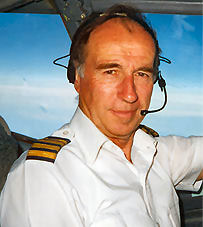
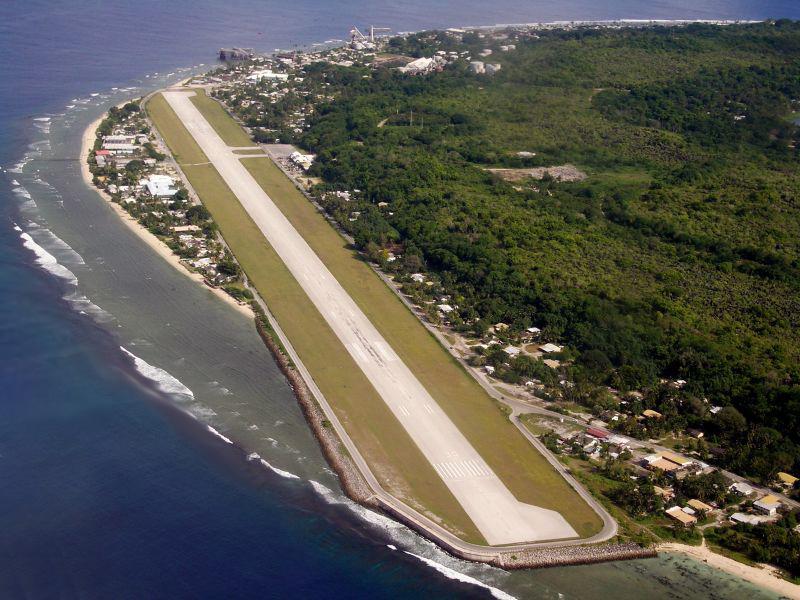
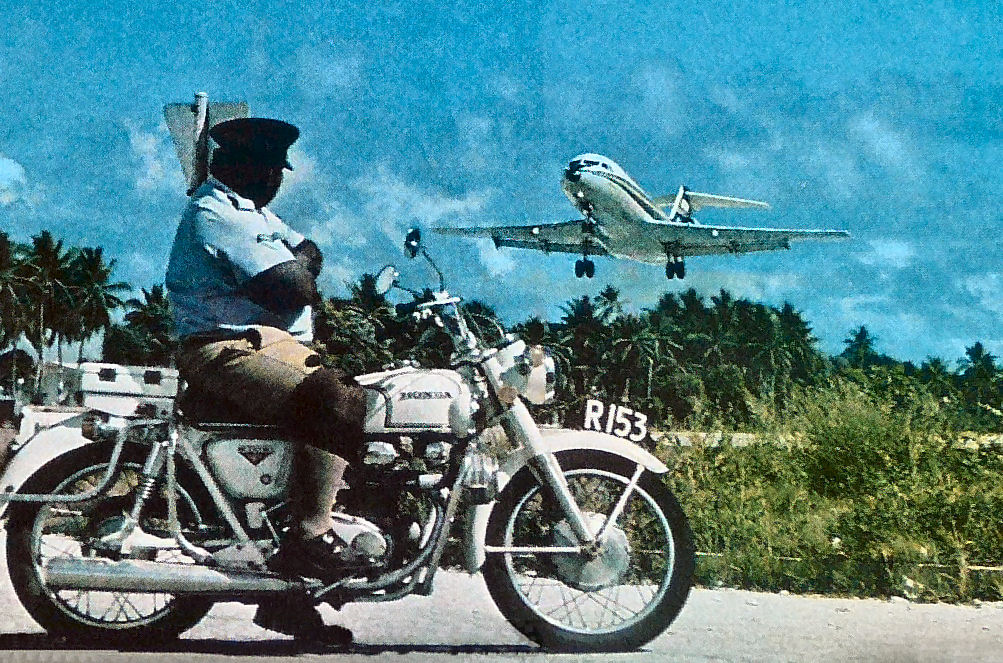
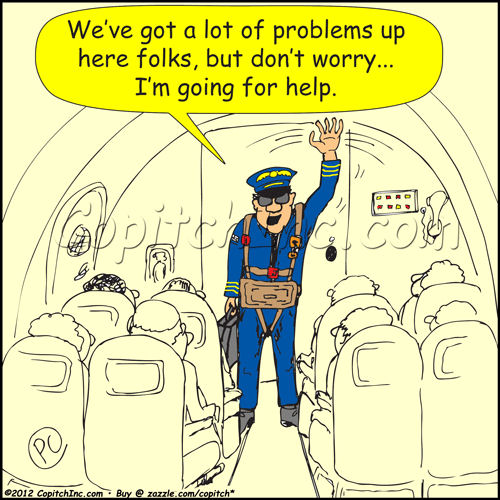
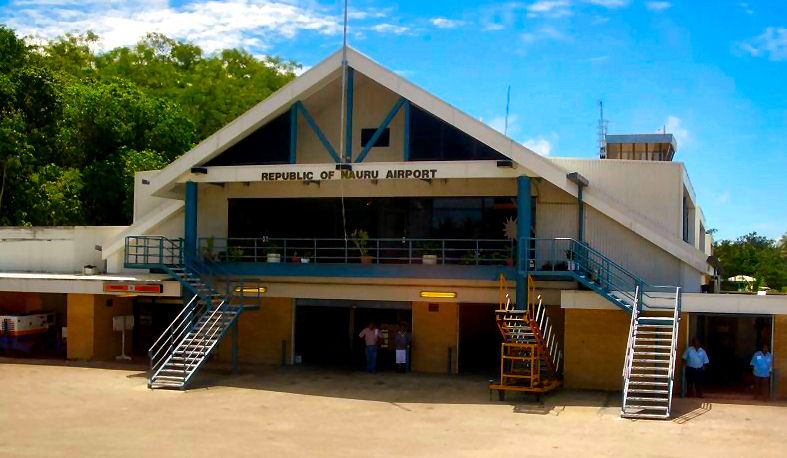
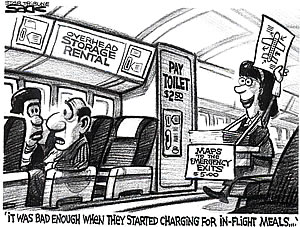
.jpg)
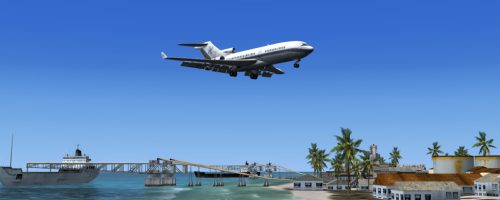 Nauruan
nationals of the government airline could break the rules and rarely get
sacked. Not so for contract expatriate staff who could be dismissed on
the spot. Thus when one of the Nauruan girls told the Japanese air
hostess to make the coffee herself, it was done with the knowledge that
her insubordination would go un-checked. She was wrong on this occasion.
Nauruan
nationals of the government airline could break the rules and rarely get
sacked. Not so for contract expatriate staff who could be dismissed on
the spot. Thus when one of the Nauruan girls told the Japanese air
hostess to make the coffee herself, it was done with the knowledge that
her insubordination would go un-checked. She was wrong on this occasion.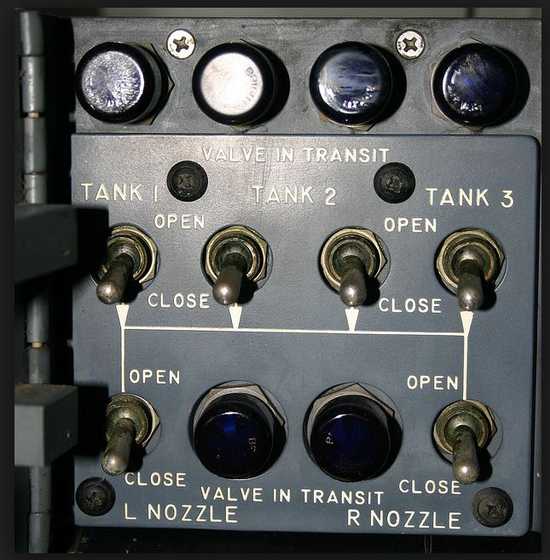 the aircraft returned to land at Nauru. Safely on the ground, the flight
was delayed until two more cabin crew were produced and the other two
sent to the local hospital to be patched up. The problem solved, Air
Nauru Flight 821 was again dispatched to Japan with a crew of seven, and
nil passengers.
the aircraft returned to land at Nauru. Safely on the ground, the flight
was delayed until two more cabin crew were produced and the other two
sent to the local hospital to be patched up. The problem solved, Air
Nauru Flight 821 was again dispatched to Japan with a crew of seven, and
nil passengers.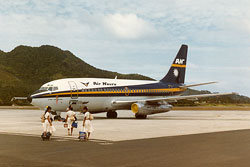 serve destinations as far away as Singapore and Honolulu and many island
countries in between.
serve destinations as far away as Singapore and Honolulu and many island
countries in between.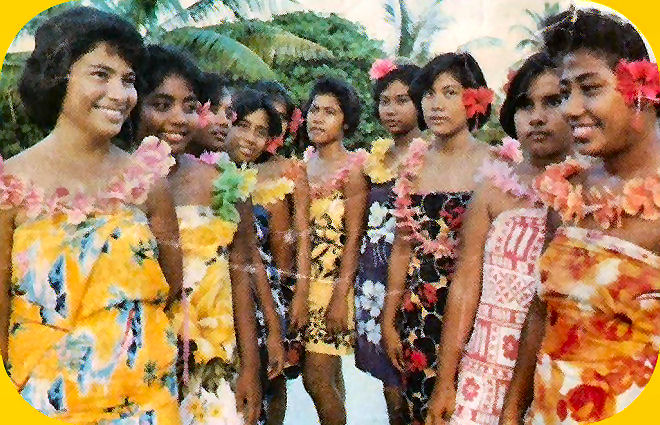 traveling to Guam and Palau to pick up or deliver a rich man's yacht,
diving club members eager to visit the under-water marvel of Truk Lagoon
to snorkel on sunken Japanese warships from the Pacific war. And not
forgetting the polite bowing of so many young newly married Japanese
honey-mooners as they board the Air Nauru flight from Kagoshima for a
week of sand and sun on Guam or Saipan. Japanese tourists were always
made welcome despite both islands witnessing scenes of the terrible
battles between US and Japanese forces during the war in the Pacific.
traveling to Guam and Palau to pick up or deliver a rich man's yacht,
diving club members eager to visit the under-water marvel of Truk Lagoon
to snorkel on sunken Japanese warships from the Pacific war. And not
forgetting the polite bowing of so many young newly married Japanese
honey-mooners as they board the Air Nauru flight from Kagoshima for a
week of sand and sun on Guam or Saipan. Japanese tourists were always
made welcome despite both islands witnessing scenes of the terrible
battles between US and Japanese forces during the war in the Pacific.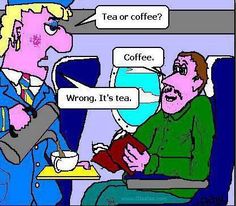 months the 737s flew under Private category with passengers travelling
free of charge.
months the 737s flew under Private category with passengers travelling
free of charge.